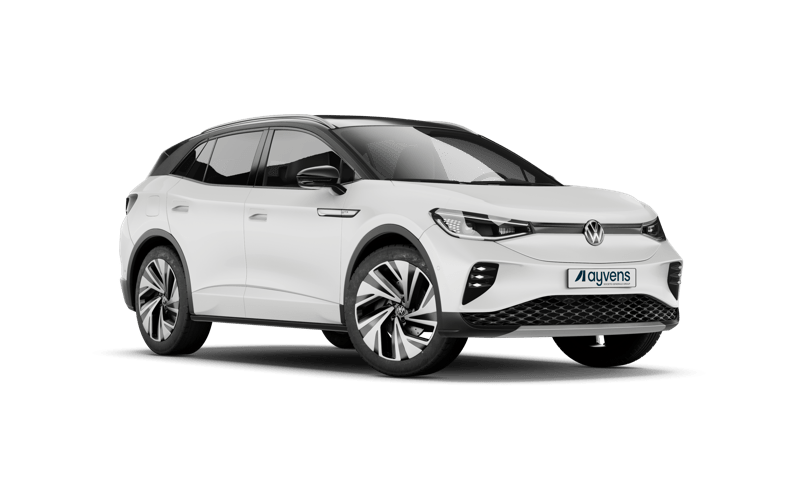
A fun, functional, people’s EV
In true Volkswagon spirit, the functional, fun-to-drive, all-electric ID.4 is an SUV designed “for the people.” Go boldly into the future, gas-free, and up to 400 km between charges. Nondescript but not boring, the ID.4 looks like a typical VW with a few futuristic flourishes.
Inside the cabin, you’ll feel the space its MEB platform makes—with plenty of room for four friends and 64.2 cu ft of cargo. While the loaded 1st Edition offers plenty of upgrades, a 10.0-inch infotainment touchscreen and navigation system comes standard.

Get your groove on and drive
The ID.4 squeezes every last mile out of its battery pack before a recharge, thanks to a functional shape that’s about more than style—although its clean, aerodynamic lines do make for a striking presence on the road.
The contemporary interior is uncluttered and bright, with VW’s branded ID Light system producing a unique, festive vibe—almost like a dance floor on wheels. The 1st Edition model comes with a panoramic sunroof among other perks, and all ID.4 models come with a 5.3-inch reconfigurable digital gauge display and voice recognition capability.

Power to the people and planet
Part of VW’s “worldwide strategy to deliver millions of electric vehicles to help combat global climate change” the ID.4's 82 kWh battery pack punches 100 km/h in 8.5 seconds and travels up to 400 km between charges.
You can power up at home on 110- or 240-volt connections, or fast charge on DC at a speed of 460 km/h. The electrified VW also offers a host of standard and optional driver-assistance technology so it's as safe as it is smart.
Battery
- Range400 km
- Charge Speed49 km/h
- Fast Charge Speed460 km/h
Performance
- Acceleration 0 - 100 km/h 8.5 sec
- Total Power 150 kW (204 PS)
- Torque310N·m
Miscellaneous
- Seats5
- BodySUV
- Drive Rear

